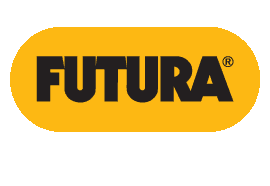| YOU ARE HERE: Home > Futura Cookware > Care & Cleaning |
| Hard Anodised & Nonstick Cookware: How to Clean |
| Wash After Every Use |
| Taking care to protect your hand from the hot pan with sufficient paper napkin or cloth, wipe off residual oil with a paper napkin or muslin cloth from hot pan immediately after cooking. Doing so makes cleaning very much easier |
| Always wash all surfaces of pan and lid thoroughly after every use in hot water with a mild soap or detergent and a dishcloth or sponge. Do not wash pan in a dishwasher. Let pan cool before immersing in water. For stubborn spots on the nonstick surface , soak pan in hot water (cold water after cooking eggs or milk) for about 10 minutes and rub with a non-abrasive plastic scrubber - never use steel wool, coarse or metallic scouring pads or abrasive detergents. When cleaning the pan ensure that the nonstick coating is not gouged or rubbed against any hard or sharp surface. While cleaning, keep a folded kitchen cloth or a piece of any other soft material such as rubber or sponge underneath the pan to avoid damaging the pan. Dry thoroughly with a soft clean cloth |
| Stainless steel lid and glass lid may be washed in a dishwasher but this can dull the finish. Wash wooden spatula (included with Nonstick cookware) in hot water with a mild soap or detergent, rinse and dry immediately - do not soak. |
| Metallic marks - most often from gas stove pan supports - may appear on the hard anodised base. To remove metallic marks from base: apply a kitchen cleanser, such as 'Vim', to the marks and rub with an abrasive kitchen scrubber, such as 'Scotch-Brite' or fine steel wool. |
| Avoid "Baked-On" Food/Stains: |
| If pan is not cleaned thoroughly, a thin layer of food or grease may remain. When the pan is heated next, this food/grease becomes "baked-on" and very difficult to remove. "Baked-on" food and the stains from "baked-on" food may be impossible to remove without damaging the pan. |
| If you get "baked-on" food/stains, you may try the following methods (knowing that the pan surface may get damaged). |
| For Hard Anodised Cookware |
| Make a thick paste of a cleaning powder such as 'Vim' and apply it to the "baked-on" food/stain. Wait 5 to 10 minutes. Scour with steel wool using a circular motion. Wash |
| For Nonstick Cookware |
| On the Hard Anodised (exterior surface): Make a thick paste of a cleaning powder such as 'Vim' and apply it to the "baked-on" food/stain. Wait 5 to 10 minutes. Scour with steel wool using a circular motion. Wash. |
| On the Nonstick (interior surface): Make a thick paste of a cleaning powder such as 'Vim' and apply it to the "baked-on" food/stain. Wait 5 to 10 minutes. Scour with a plastic scrubber using a circular motion. Wash |



